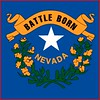Karl Denninger at The Market Ticker notes some strange happenings between Treasury and the 9 banks receiving bail-out money. It seems the $250 billion was never intended to help the credit squeeze. The banks will not be lending it to other banks. They'll be hoarding it to improve their own bottom lines. So, what was the point of it all, besides letting Paulson's friends keep their jobs?
F. William Engdahl at 321 Gold adds some interesting history to our current situation. In 1931, the Bank of England, together with JP Morgan (the bank) combined in a hostile take-over bid of the German commercial banks. The result was that the German banks collapsed, leading to a severe recession and high inflation. The German government at the time had to cut social programs and raise taxes, leading to the unfortunate rise of Adolph Hitler.
Fast forward now, to our own time. After Treasury's $750 billion grab was OK'd by congress, Paulson was set to play the game by the standard set of rules. On Oct. 8th the British government abruptly nationalized 8 banks, including the Bank of Scotland. This move may have been as much about thwarting Scottish independence as saving the British banking system. Two days later, the Germans announced they would follow England's lead.
Since the whole credit mess started in the US, that left $68 trillion in debt sitting on the American table. Paulson, forced to play defense, had no choice but to socialize the 9 largest US banks. Not doing so would have left them sitting ducks for a European take-over.
It's an interesting theory, and the facts and timing seem to fit. Two things we can say with certainty: (1) there is a very high stakes game being played that has little, if anything, to do with Main Street, (2) the government story, echoed in the press, is not the real story.
Subscribe to:
Post Comments (Atom)




2 comments:
Actually...the history goes back further than '31. After its loss, the U.S. and Britain, under the Treaty of Versailles, straddled Germany with enormous war reparations debt with almost usuorous fees. U.S. and Britain banks invested heavily in buying these up because of their high rates of return.
Along about 1929, Germany said it would no longer pay the debts and started to use the money to rebuild itself. The U.S. banks were then left holding trillions in useless paper so when bank runs in the U.S. started there was nothing to fall back on. The '31 takeover was only symbolic as the German governement was by then Germany's central banking system with the old banks being little more than useless store fronts.
Thanks for the added info. It's difficult to find a good starting place for this stuff. Most of my reading has been about the 19th century. Things were a lot more straight forward then.
Post a Comment